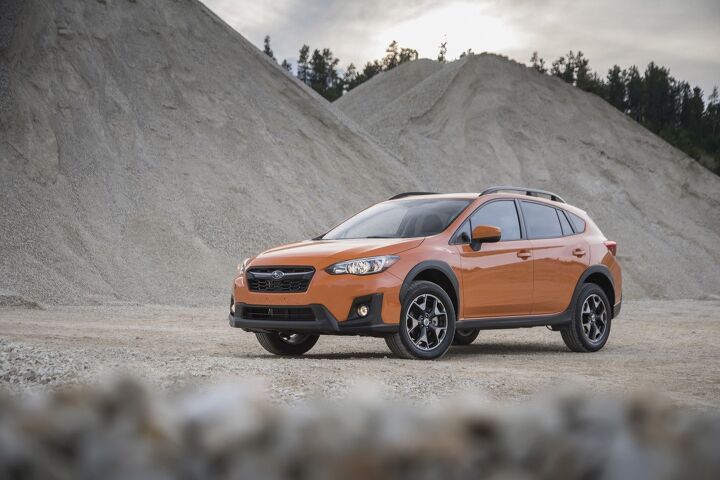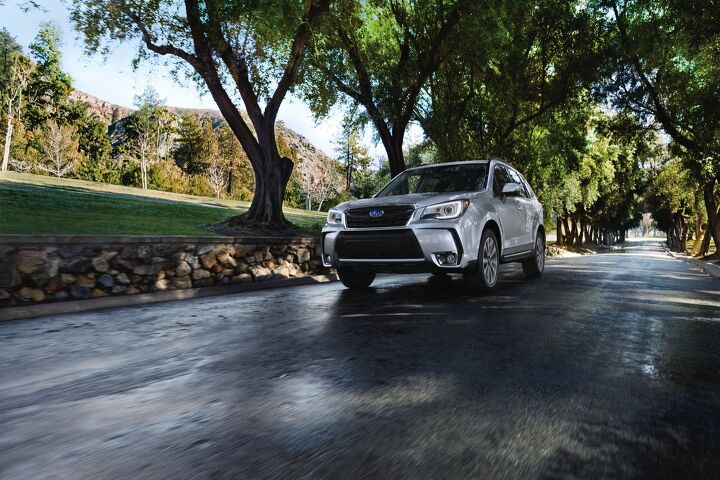QOTD: Can Subaru Just Go Ahead And Sell Whatever It Wants, Wherever It Wants, Whenever It Wants?
In September 2017, Subaru reported the company’s 70th consecutive year-over-year U.S. sales increase. That’s nearly six complete years of steadily improving U.S. sales volume.
Think of it this way: 2013 was a huge year for Subaru of America as sales had risen 59 percent over the span of just two years. But in 2013, Subaru sold 424,683 over the course of the entire calendar year. In 2017, that’s a total Subaru blasted past in the first week of September.
But have you ever stopped to notice that Subaru is accomplishing much of its success with three remarkably similar variations of the same theme? Crosstrek, Forester, Outback. A bit of extra length there, a touch of extra height here, a smidgen of savings there, a dose of extra equipment here. This is hardly the historically obvious 3 Series to 5 Series to 7 Series lineup. The Crosstrek, Forester, and Outback are conceptually similar vehicles with overlapping price spectrums. And recently, with a huge leap in Crosstrek popularity, they’re all similarly popular, too.
You almost get the sense Subaru could squeeze an Outback “four-door coupe” in there and sell 12,000 of those each month, too.
Or could they? Is the huge success of Subaru in 2017 — consistent U.S. sales growth despite a market-wide slowdown — something of a peak, nothing more than the result of inflated demand for a lineup temporarily perceived as hot?
In September, Subaru of America reported 12,491 Crosstrek sales. That’s a September record, the second-best month ever (after August’s record) and just the third month in the nameplate’s history in which the newly relaunched Crosstrek entered five-digit territory. Crosstrek pricing stretches from $22,710 to $27,210.
Subaru also sold 13,262 Foresters in September, a sharp 17-percent year-over-year drop for the Forester but still the model’s 50th consecutive month above the 10K marker. Forester pricing starts just beyond the base Crosstrek at $23,710 but reaches to a higher $37,005.
Then there’s the Outback, now Subaru’s best-selling model with 140,491 sales so far this year. September volume slid slightly, 4 percent, to 16,330 units. Outback pricing starts at $26,810, only $2000 beyond the basic Forester automatic, and soars to $39,605.
The Crosstrek, Forester, and Outback accounted for 76 percent of Subaru’s September volume.
September’s huge 51-percent Crosstrek uptick came as sales of its donor vehicle, the Impreza, jumped 32 percent. While industry-wide September incentives rose 1.5 percent, year-over-year, to $3,742 per vehicle according to ALG, Subaru’s average discount fell 6 percent to only $1,026. The auto industry’s average transaction price fell 1 percent; Subaru’s ATPs ticked up by a tenth of a percent. The industry discounted vehicles by an average of 11.5 percent in September. Subaru cut prices by less than 4 percent. Together with the Crosstrek’s rise, these financial tallies help explain the acceptable losses in Forester and Outback sales — Subaru refuses to play that game.
Is the current wave of Subaru acceptance anywhere near cresting, or could Subaru theoretically position another mid-$20,000s two-row crossover and find itself in short supply of that vehicle, too?
Subaru won’t test that theory, of course. The next vehicle stretches the range on the north side. The Ascent will be Subaru’s flagship vehicle. Based on current trends, it seems as though Subaru won’t be able to build enough to sate demand.
Can Subaru just do as it pleases, build whatever it wants, and find even more buyers than it thought possible? Or will America’s Subaru affection soon max out?
[Images: Subaru]
Timothy Cain is a contributing analyst at The Truth About Cars and Autofocus.ca and the founder and former editor of GoodCarBadCar.net. Follow on Twitter @timcaincars and Instagram.
More by Timothy Cain
Latest Car Reviews
Read moreLatest Product Reviews
Read moreRecent Comments
- FreedMike Yeah, this trend needs to die a painful death.
- THX1136 This reminds me of a 'fad' back when I was in high school that was equally silly. A few folks would put spacers in the rear springs to lift the back end of the vehicle to ridiculous heights. We would joke that they must think it makes the car go faster since it feels like you're driving downhill all the time. Dangerous for all the reasons Redapple2 mentions.
- Arthur Dailey Just a couple of questions. Are you adding a stabilizer to your gas tank as the gas sits so long? Aren't tires usable for up to 10 years after manufacture, rather than 7? And should you wait so long between oil changes? Even with the low mileage can the oil degrade? Eagerly awaiting responses from one and all.
- Redapple2 I m afraid I d hate the crazy color 2 yrs down the line of a 6 year ownership. So, after dark blues, and dark reds I m back to a wonderful deep, pearly, lustrous white. Looks good at night. In the day. Clean; and when dirty, hides it.
- THX1136 Some folks down the street from me had a beautiful blue/green Jeep. I stay away from grey, brown, silver and black. Ironically I own a white vehicle at the moment due to not being able to afford the blue one I was considering and not wanting the aforementioned colors. A nice emerald green, most shades of blue (Santa Fe Blue is a favorite) and the 'hotter' colors like orange, purple and yellow appeal, but as KOKing mentioned it's got to look 'right' on the car in question.




































Comments
Join the conversation
I've been wondering why anyone would pay money for a Subaru - not bad, but nothing exceptionally great - and I feel like there's a lot of elderly people who buy these cars and Kia Souls, and I think there are two main reasons. 1) When you sit in the driver's seat the H-point is nearly at the same height as a standing, so you don't really sit "down" you just pull your knees and feet up into the car, and when you exit, you don't have to work your thighs to "sit up". 2) Price - they're inexpensive.
I enjoy driving. Subarus are not fun to drive. Most Subaru owners view them them the same as they do an Appliance.... they want it to do its job reliably. I am more of a fleet operator.... a car for the city which is a 2016 VW SportWagen a car for road trips which is a 2009 BMW 335d and a truck for towing and Hauling which is a Nissan Titan modified with big brakes and airbags. When my new house in Kiowa Colorado is done I will trade the Sport Wagon for an Alltrack